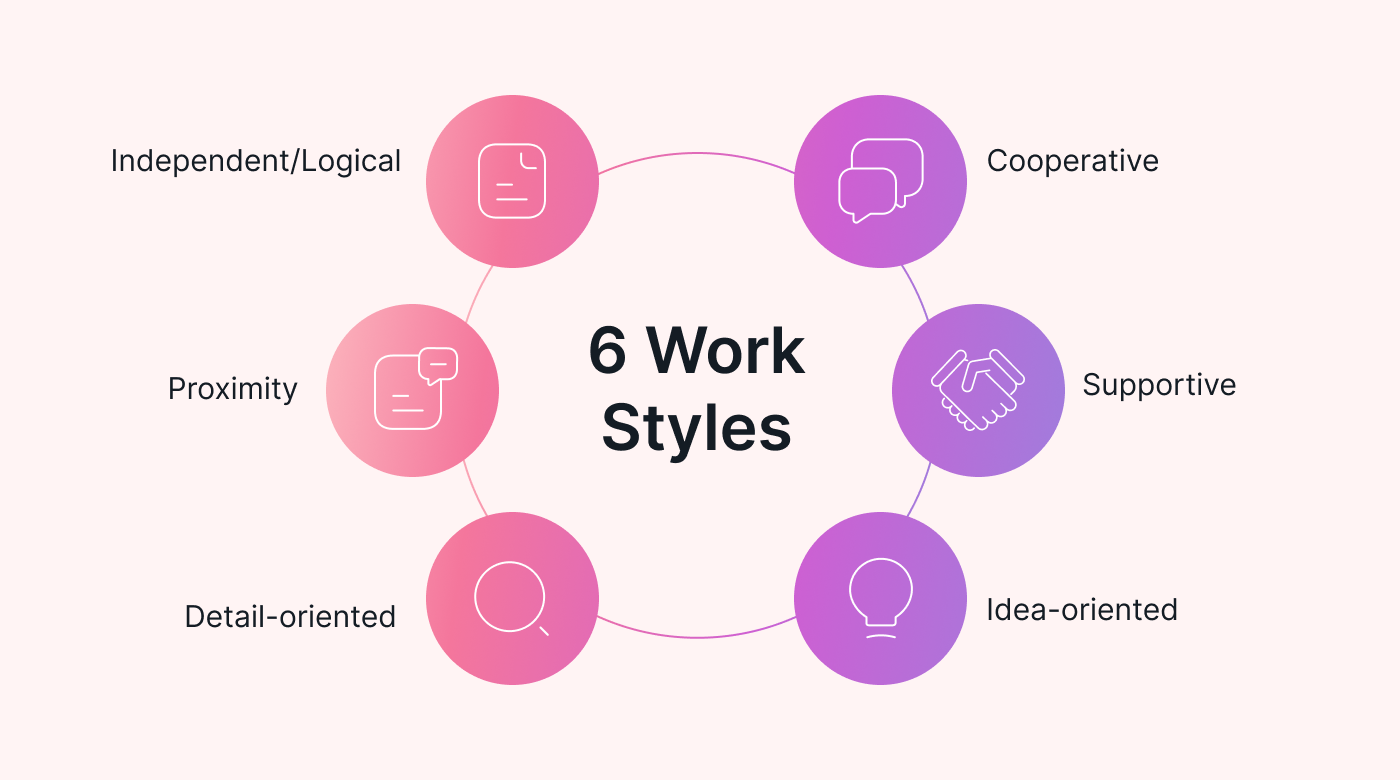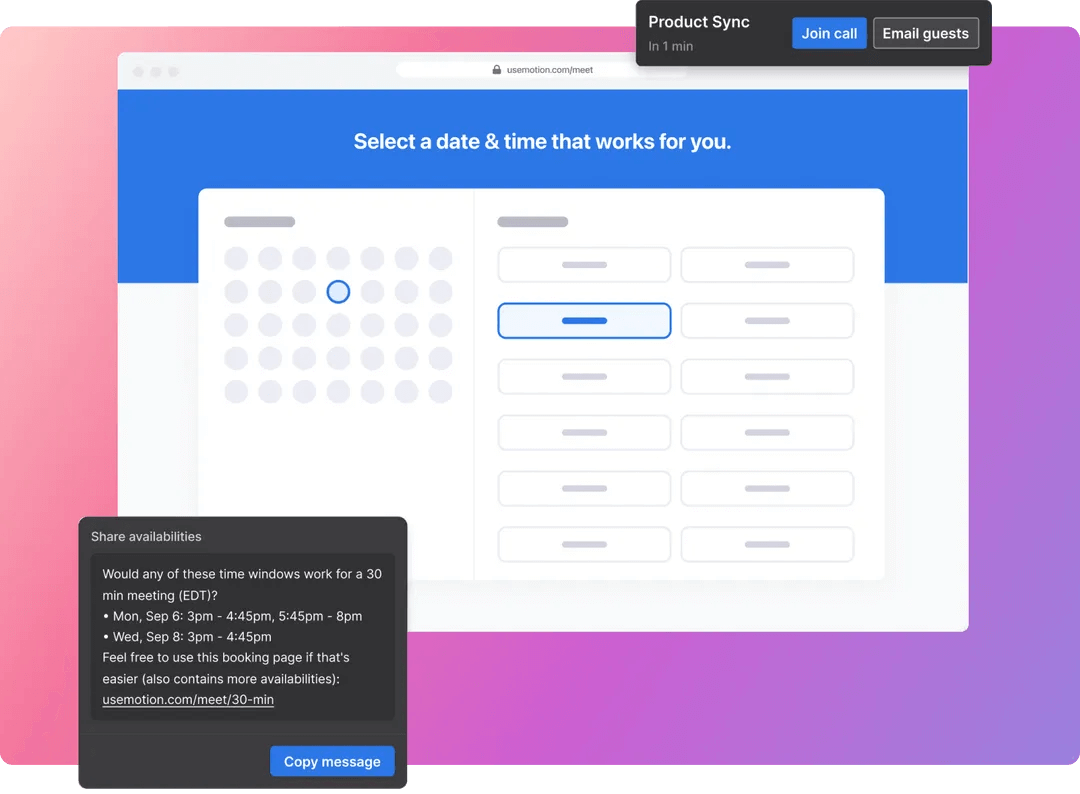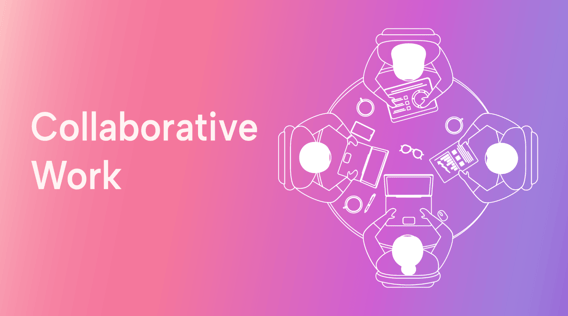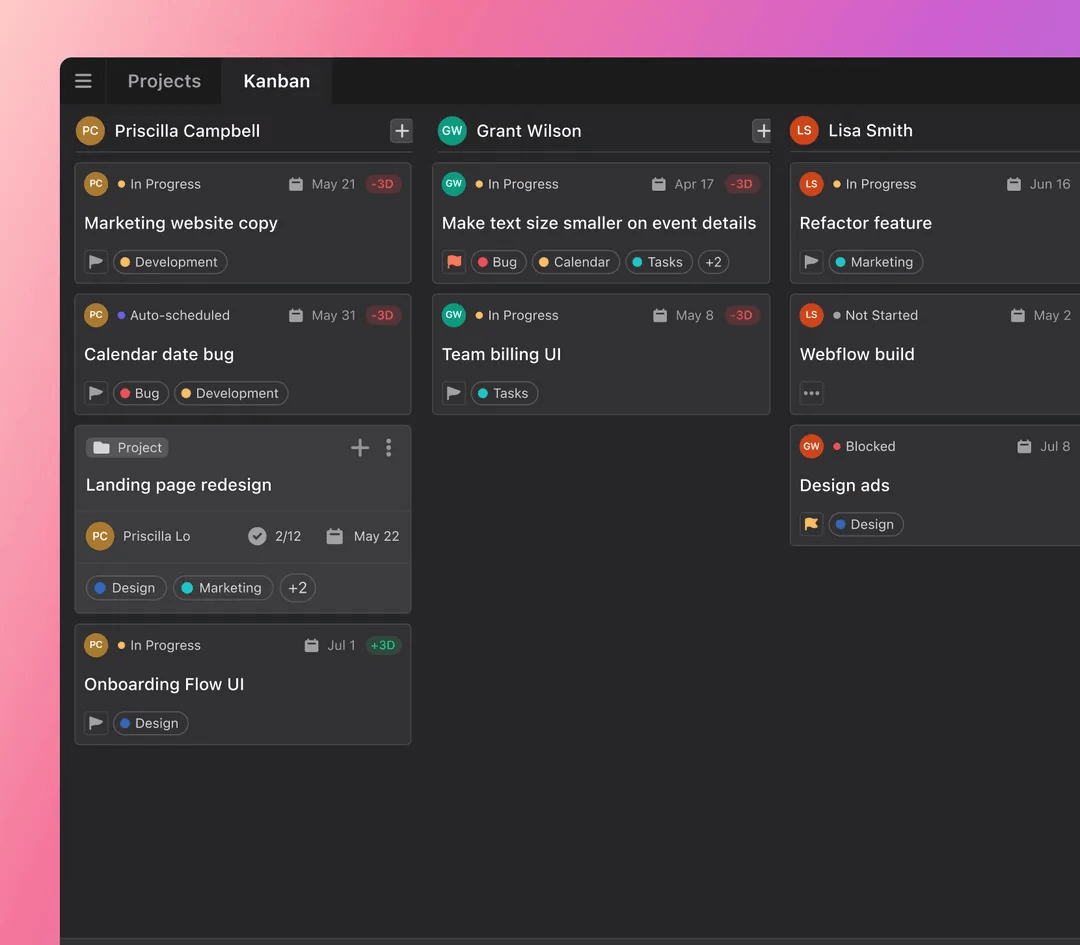It’s said that two heads work better than one.
And that’s often true — but not if those heads are moving in opposite directions.
Workplace collaboration is easier said than done. Because it involves dealing with multiple personalities and work styles, misunderstandings and conflicts can easily arise. Knowing these types of issues and how to resolve them is where the true challenge lies.
This article discusses a number of challenges with collaborative working and provides key tips to help you build a team environment in which everyone works well together.
What is collaborative work?
Collaborative work happens when teammates work together toward a common objective. Their goal is to harness their different skills and expertise to accomplish more collectively than individual members could alone.
In a collaborative environment, tasks and projects are a joint effort, which encourages unity and shared responsibility. This approach also brings together diverse perspectives and insights, fostering a richer, more creative problem-solving process.
While individual work has its merits, team collaboration has the potential to elevate output because a collaborative group can come up with solutions that are both innovative and well-rounded.
Why is collaborative working important?
Collaborative work not only amplifies individual strengths but also creates new possibilities for success. It does these things by:
Fueling creativity and innovation
When individuals from diverse backgrounds and expertise levels collaborate, the result is an exchange of unique perspectives and collective creativity.
Collaborative brainstorming often triggers outside-of-the-box ideas and unconventional solutions that likely wouldn’t have surfaced in a siloed working environment. Teams can achieve unexpected breakthroughs in their projects, products, or strategies by building upon individual ideas.
Collaborative work helps develop a culture of innovation that allows the company to be agile, forward-thinking, and adaptable to changes in the market.
Streamlining decision-making and problem-solving
Collective wisdom contributes to faster and more informed decisions and solutions. With more minds to tackle challenges, complex situations become more navigable. This means problems can be addressed from different angles, enhancing the depth and breadth of the solutions that are generated.
 |
The timeline from problem identification to implementation of solutions is also likely to be shortened with collaborative work. This efficiency allows for a smoother, more agile decision-making and problem-solving process, which is essential for maintaining operational momentum and ensuring responsiveness to any hurdles the business might encounter.
Fostering team unity
According to recent research, 60% of employees believe effective collaboration has a positive impact on employee morale.
Collaborative work emphasizes “we” over “me.” It helps build trust, understanding, and camaraderie through mutual commitment. This helps cultivate an environment where successes are jointly celebrated, and setbacks are collectively addressed and resolved.
Solidarity is indispensable, as it can enhance job satisfaction, reduce turnover rates, and create a sense of belonging and purpose within the workforce.
Enhancing productivity and efficiency
Sixty-four percent of employees claim that poor collaboration costs them at least three hours of productivity per week, and 20% claim they waste up to six hours of productivity per week.
A collaborative work environment helps keep this problem at bay by dividing tasks, allowing teammates to use their individual strengths, and saving time and resources. It also reduces redundancies and streamlines workflows so that teams can accomplish tasks faster and at a higher quality.
Challenges of creating a collaborative work environment
If creating a collaborative work environment were easy, every company would have mastered it by now.
There are several roadblocks that companies must overcome before they can truly establish a culture of collaboration in their teams.
Communication barriers
As a team grows, ensuring effective communication becomes increasingly complicated. Introducing more people means considering more opinions, preferences, and communication styles.
Each new team member may communicate differently, which can result in miscommunication or missed information. For example, one person may prefer detailed email updates, but another might enjoy short, verbal updates.
Physical distance — especially when it comes to remote teams — adds another layer of complication to communication. This issue often limits the quick exchanges and clarifications that can occur naturally when teams collaborate in a physical office.
Conflicting work styles
In any team, differences in working styles are inevitable and can lead to friction or inefficiencies in collaboration.
When it comes to working collaboratively on projects, some team members enjoy group settings and active engagement, while others like to work independently and autonomously.
 |
These differences can further escalate tensions and confusion when project expectations are unclear. Ultimately, aligning individual preferences with team standards and goals requires profound understanding, empathy, and compromise.
Complicated workflow
Maintaining a smooth workflow is often challenging in collaborative settings. Without clear insights into each person’s roles, teams can find themselves with overlapping responsibilities or forgotten tasks. This lack of clarity bogs down progress and can lead to confusion, errors, and lower overall efficiency.
Moreover, a lack of transparency in a project’s trajectory can further muddle the collective understanding of project objectives. Teams may find themselves struggling to coordinate, misjudging priorities, and making misinformed decisions.
Collaborative work tools like Motion become essential in these situations, as they help to streamline communication, clarify task assignments, and enhance overall project visibility.
5 tips for creating a collaborative work environment
Overcoming the challenges outlined above is difficult but not impossible. Use the following five collaborative work management tips to help you build an environment that inspires innovation and shared success:
1. Embrace open communication
Open communication encourages team members to voice their ideas, concerns, and feedback. They know they’re in a safe, judgment-free space. This openness fosters trust and facilitates the free flow of information necessary for collective problem-solving and innovation.
That being said, make sure open communication in your team doesn’t devolve into unproductive criticism or oversharing.
What to do: Use a platform like Motion, which allows team members to comment directly on project boards to enhance transparency and keep everyone aligned on project goals and individual responsibilities.
2. Define responsibilities
Teams can avoid the confusion of overlapping duties if you assign each task to the best-suited person. This will also help your team members understand and appreciate how their individual contributions impact the larger project.
Remember that as a project progresses, responsibilities may need adjustments. So, keep roles and tasks flexible and adaptive.
What to do: Routinely review and update each member’s tasks to reflect current needs as a project evolves. Motion can be particularly effective here since it allows everyone on the team to see real-time progress and know what each person is working on.
3. Make time for creative thinking
Setting aside time for brainstorming and creative thinking helps teams escape the daily operational routine and think outside the box.
These moments of creative exploration are invaluable, as they foster an environment in which fresh solutions emerge, and team members can feel more engaged and invested in the collaborative process.
 |
What to do: Don’t leave creative sessions to chance. Intentionally hold regular brainstorming sessions in which everyone knows they’re welcome to contribute, regardless of their position. Motion’s meeting assistant can effortlessly schedule creative sessions that accommodate everyone’s schedules so no one misses out on the opportunity to contribute.
4. Invest in collaborative work tools
Collaboration tools streamline the complexities of team projects. For example, Motion offers features like project tracking, shared calendars, and centralized communication and storage.
These features ensure everyone is on the same page consistently. Integrating them means teams can avoid the chaos of scattered information, reduce the frequency of update meetings, and cut down on lengthy email threads.
What to do: Introducing collaborative tools isn’t enough — you need to provide your team with training on how to use these platforms effectively. Additionally, regularly assess the tools’ efficacy and relevance so that they continue to meet the team’s evolving needs.
5. Promote continuous feedback and improvement
A whopping 40% of employees haven’t participated in individual discussions with leaders over a six-month period.
Continuous feedback enables constant improvement of team collaboration. For instance, introducing regular feedback loops, such as monthly or quarterly reviews, helps leaders gauge team performance and individual satisfaction. These could be one-on-one sessions or open group discussions. Regardless of the session format, it’s important to have a follow-up action plan to address the feedback received.
What to do: Set recurring reminders through Motion to remind you of critical check-ins and feedback sessions. These reminders can also be sent to team members to make sure they’re prepared and understand the importance of these meetings. The more consistent the feedback process is, the more trust and openness will develop within the team.
Example of collaborative work management
Spotify, a global leader in music streaming services, has revolutionized collaborative work through its innovative “squad” system. Its approach breaks traditional large teams into smaller, cross-functional groups known as squads. Each squad is autonomous, equipped with the necessary skill sets and tools, and focused on specific aspects of the product.
The squad structure encourages constant communication, rapid problem-solving, and the agility to respond to market changes. This is because the system minimizes bureaucratic delays and decision-making layers, allowing for direct communication and faster action. Moreover, the structure creates a sense of individual responsibility and ownership, which inspires teams to work collaboratively toward their specific goals while also contributing to the company’s overall vision.
Motion: The ultimate tool for collaborative work
Motion makes collaborative work intuitive through streamlined features such as task automation, progress tracking, and real-time communication. Experience a different caliber of collaboration with Motion now.






